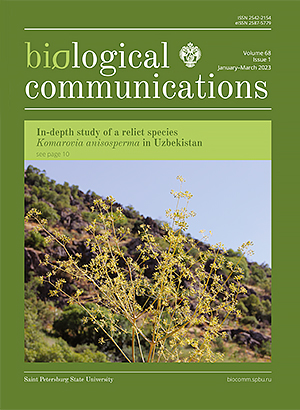Comparative analysis of methods for batch correction in proteomics — a two-batch case
DOI:
https://doi.org/10.21638/spbu03.2023.106Abstract
A proper study design is vital for life science. Any effects unrelated to the studied ones (batch effects) should be avoided. Still, it is not always possible to exclude all batch effects in a complicated omics study. Here we discuss an appropriate way for analysis of proteomics data with an enormous technical batch effect. We re-analyzed the published dataset (PXD032212) with two batches of samples analyzed in two different years. Each batch includes control and differentiated cells. Control and differentiated cells form separate clusters with 209 differentially expressed proteins (DEPs). Nevertheless, the differences between the batches were higher than between the cell types. Therefore, the analysis of only one of the batches gives 276 or 290 DEPs. Then we compared the efficiency of five methods for batch correction. ComBat was the most effective method for batch effect correction, and the analysis of the corrected dataset revealed 406 DEPs.
Keywords:
batch effect, proteomics, bioinformatics, batch effect correction
Downloads
References
Downloads
Published
How to Cite
License
Articles of Biological Communications are open access distributed under the terms of the License Agreement with Saint Petersburg State University, which permits to the authors unrestricted distribution and self-archiving free of charge.





